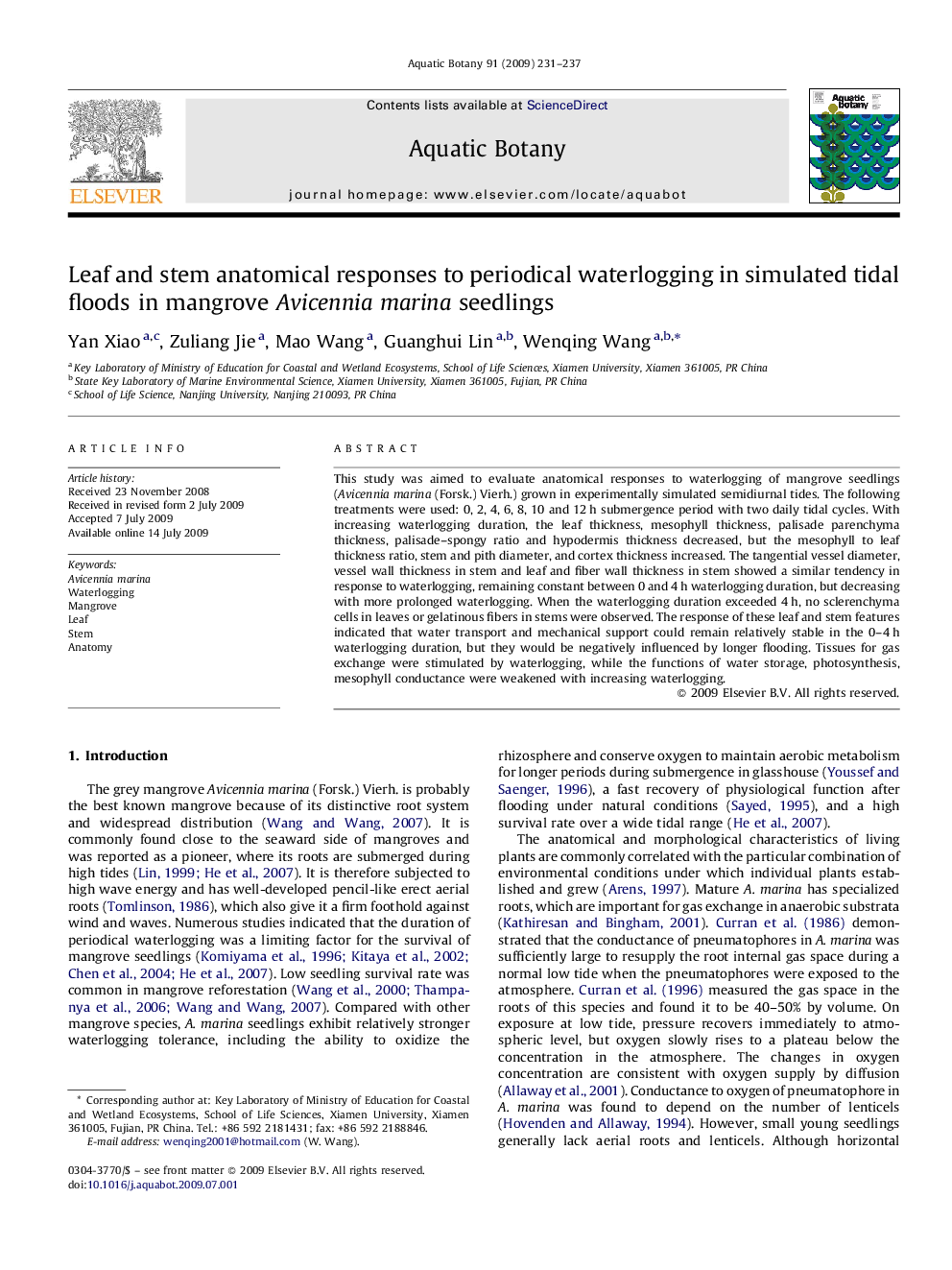| Article ID | Journal | Published Year | Pages | File Type |
|---|---|---|---|---|
| 4528273 | Aquatic Botany | 2009 | 7 Pages |
This study was aimed to evaluate anatomical responses to waterlogging of mangrove seedlings (Avicennia marina (Forsk.) Vierh.) grown in experimentally simulated semidiurnal tides. The following treatments were used: 0, 2, 4, 6, 8, 10 and 12 h submergence period with two daily tidal cycles. With increasing waterlogging duration, the leaf thickness, mesophyll thickness, palisade parenchyma thickness, palisade–spongy ratio and hypodermis thickness decreased, but the mesophyll to leaf thickness ratio, stem and pith diameter, and cortex thickness increased. The tangential vessel diameter, vessel wall thickness in stem and leaf and fiber wall thickness in stem showed a similar tendency in response to waterlogging, remaining constant between 0 and 4 h waterlogging duration, but decreasing with more prolonged waterlogging. When the waterlogging duration exceeded 4 h, no sclerenchyma cells in leaves or gelatinous fibers in stems were observed. The response of these leaf and stem features indicated that water transport and mechanical support could remain relatively stable in the 0–4 h waterlogging duration, but they would be negatively influenced by longer flooding. Tissues for gas exchange were stimulated by waterlogging, while the functions of water storage, photosynthesis, mesophyll conductance were weakened with increasing waterlogging.
